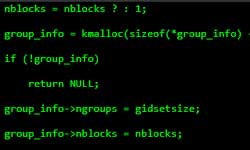


And they decided that they wouldn't put any rules in about how many modifiers could be used on each base character, because some languages may need a lot of modifiers. (including all the base characters from other languages), and then they'd allow people to "modify" these base characters with these special "modifier" characters that are applied to the base characters. So rather than saying that we'll have a separate character for every possible configuration of marks, the computer people who designed the way that text works on computers decided that they'll just have the "base" characters like a, b, c, d, etc. Well, there are a tonne of languages that use these types of markings, and some languages have all sorts of rules with multiple marks per character, so a single character could have a dozen different forms. How does this hacked text stuff work? Well, you know how some languages have the marks above some characters? Like how "cliché" has a mark above the "e". You can use it to convert normal text into crazily messy hacked text, and you can control how messed-up you want it to be with the slider at the bottom of the second box.


 0 kommentar(er)
0 kommentar(er)
